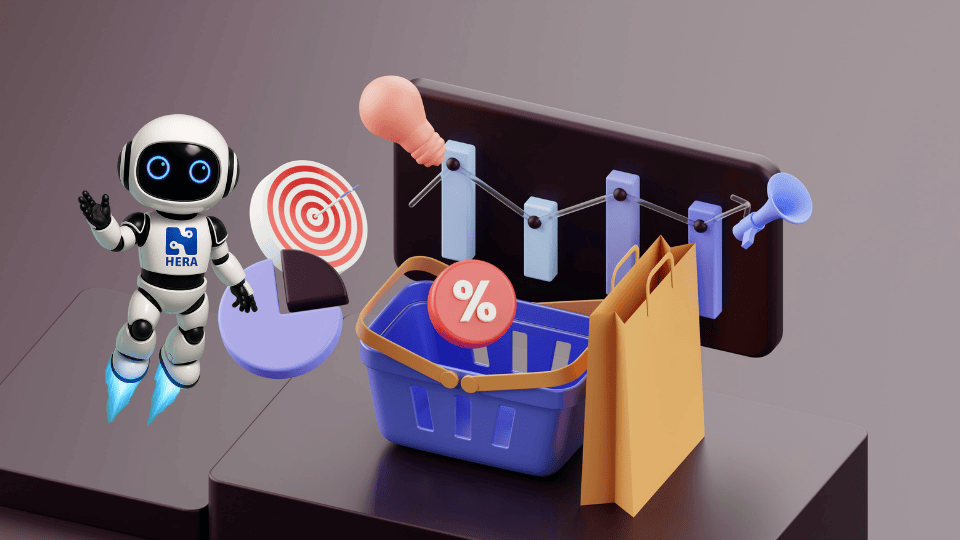Author - Yuliana Agung
CX – A Soft Metric or a Profit Lever?
Customer Experience (CX) is often mistakenly perceived as a "soft" metric, difficult to quantify and absent from financial statements. However, robust business evidence demonstrates its tangible financial impact. While CX may not appear directly on the balance sheet, its effects directly influence the bottom line.
Satisfied, loyal customers are the engine of repeat business, increased spending, and valuable referrals, all contributing to significant revenue growth and enhanced cost efficiency. Superior CX expands profit margins in ways that no purely cost-cutting measure can, by effectively reducing churn and increasing customer lifetime value. As one analysis highlights, an improved overall customer experience leads to "higher sales, happier customers, and higher profit margins."
In essence, CX transcends being merely a feel-good factor; it is a powerful driver of profitability.
CX in the P&L – The “What” vs. the “How”
Customer Experience (CX) is intrinsically linked to a company's financial performance, particularly evident in traditional metrics like Gross Profit Margin (GPM) and Net Profit Margin (NPM). GPM primarily reflects the profitability from sales (revenue minus cost of goods), focusing on "what" a company sells.
NPM, conversely, reveals "how" a business operates. It encompasses all operating expenses and efficiencies, providing a holistic view of profitability after product or service delivery. A strong product may yield a high GPM, but poor operational efficiency, customer service, support, or care can lead to a low NPM. As a guide notes, net margin includes all operational costs, not just direct product costs, offering a comprehensive picture of financial health. It's about the efficiency of the entire operation, not just inventory management.
Customer Experience directly impacts operational line items, influencing marketing spend, customer service costs, and customer retention, all of which affect net margin. Companies that prioritize only "what" they sell (product and sales) may see short-term gross profit gains. However, neglecting "how" they serve customers can result in increased churn, higher customer acquisition costs, and ultimately, eroded net profits. Sustainable differentiation, for enduring companies, stems from their method of value delivery, not solely from their offerings.
How Customer Experience Directly Impacts Net Profit Margin
Great customer experience drives financial performance by simultaneously lifting revenue and controlling costs. Key profit drivers linked to CX include:
- Higher Customer Retention & Loyalty: Happy customers stay longer. Customer satisfaction directly correlates with increased customer retention, which in turn significantly boosts revenue. Retaining existing customers is far more cost-effective than acquiring new ones; even a modest 5% increase in retention can lead to a profit surge of 25-95%. Furthermore, loyal customers exhibit less price sensitivity and are more open to new products and services. A Harvard Business Review study highlighted that customers with superior past customer experiences spent 140% more, underscoring how strong CX cultivates loyalty that translates into substantially higher per-customer sales.
- Lower Cost of Acquisition & Service: Investing in customer experience (CX) isn't just good for your customers, it's great for your bottom line! When you delight existing customers, you spend significantly less on marketing because satisfied customers become your best advocates, spreading positive word-of-mouth and bringing in new clients through referrals. Think about it: it can cost up to five times less to keep a customer than to acquire a new one. Plus, a smooth CX journey means fewer complaints and less need for costly customer service interventions. Every happy customer is a win-win, reducing operating expenses and boosting your net profit margin. In fact, even a small 2% increase in customer retention can slash overall costs by 10%, directly protecting your bottom line by eliminating waste and inefficiency.
- Increased Customer Lifetime Value & Spend: Exceptional customer experience naturally encourages long-term loyalty, leading to increased customer lifetime value. Satisfied customers are more receptive to trying new products or services (upselling and cross-selling) because a strong foundation of trust has been built. The likelihood of selling to an existing, happy customer can be as much as 14 times higher than to a new lead, directly boosting revenue without a significant rise in acquisition costs. This positive cycle ultimately enhances your net profit margins. What's more, loyal customers often become powerful brand champions, organically extending your marketing reach without additional expense.
- Premium Pricing Power: Exceptional customer experience (CX) allows companies to command premium prices. When customers value the experience and relationship, they are willing to pay more for a trusted brand, directly improving margins. For instance, Ritz-Carlton's renowned CX enables them to maintain room rates above industry averages and high occupancy. This exceptional service quality allows them to charge a premium while still securing loyal repeat guests. Similarly, Apple's intensely loyal customer base (over 90% brand loyalty) in consumer tech permits them to sustain high profit margins on hardware and services, as customers perceive unique value in the Apple experience.
- Differentiation and Brand Equity: Ever wonder why some brands just get you? It's all about an amazing customer experience (CX). When companies consistently deliver smooth, helpful, and even delightful interactions, they're not just making a sale. Instead, they're building trust and loyalty. Think about it: a strong reputation for genuinely caring about customers and making their journey easy sets a company apart. In today's busy market, that trust makes customers stick around, even when competitors offer similar products or prices. In fact, a recent study showed that knowing and trusting a brand is the number one reason people choose to buy with a whopping 57% of consumers saying so! While competitors can copy product features or lower prices, that deep, trusted relationship built on a fantastic customer experience is incredibly hard to replicate. That's why companies that truly excel at CX see more stable revenue and better profit margins over time. It's not just about what you sell, but how you make your customers feel.
- Financial Impact of CX: Leading companies in customer experience (CX) consistently achieve better financial results than their competitors. A 16-year study showed that Customer Experience Leaders generated a cumulative stock return 5.4 times higher than CX laggards. This superior performance is due to increased customer-driven revenue and more efficient cost structures, leading to greater profitability for CX leaders.
Case Studies: How CX Investments Paying Off
Leading companies across tech, retail, and service industries have demonstrated that CX investments yield measurable improvements in profit and loyalty:
- Starbucks (Retail/Food): Starbucks has long prioritized a unique and convenient customer experience, evident in its inviting cafe atmosphere, personalized beverages, and advanced mobile app. Innovations like mobile ordering and payment have streamlined the customer journey, leading to a 7% increase in U.S. same-store sales. Notably, almost 20% of all transactions now occur via mobile orders. This direct link between CX innovation (convenience and efficiency) and sales growth not only boosts revenue but also enhances customer loyalty within the Starbucks ecosystem.
- Delta Airlines (Travel Service): Delta invested heavily in CX through employee training, technology upgrades, and a culture of attentive service. With personalized communication, enhanced in-flight services, and responsive feedback systems, Delta achieved a 20% rise in customer satisfaction and a 30% increase in loyalty program sign-ups. This customer-centric approach led to a 10% annual revenue growth, demonstrating that superior customer experience drives repeat business and premium sales, even in the highly competitive airline industry.
- Ritz-Carlton (Hospitality): Renowned for legendary customer service, Ritz-Carlton empowers every employee to deliver personalized, above-and-beyond service to guests. This unwavering focus on CX translates into industry-leading loyalty rates and allows Ritz-Carlton to command premium pricing for its luxury hotel rooms. Its occupancy rates remain consistently above peers, and the brand achieves sustained revenue growth and profitability even in competitive markets. By excelling in the “how” of hospitality & anticipating guest needs and creating memorable moments, Ritz-Carlton differentiates itself from other hotels and secures enduring customer relationships that drive its superior profit margins.
- Amazon Prime (Tech/Retail): Amazon’s relentless customer-centric approach – exemplified by perks like one-day Prime shipping, easy returns, and a frictionless online interface has built extraordinary loyalty. Amazon Prime members in the U.S. have about a 93% retention rate after one year, climbing to 98% after two years. Such high retention produces a stable base of recurring subscription revenue and repeat purchases, contributing to Amazon’s growth and scale. Importantly, Amazon’s focus on customer satisfaction has also reduced marketing costs per customer (since happy Prime members keep renewing without needing costly reacquisition). Amazon’s case underscores that investing in customer experience (the convenience, reliability, and trust of Prime) directly yields customer loyalty on a massive scale and with it, long-term profitability.
The “How” of Business: Sustainable Differentiation
Focusing only on what you sell, product features, or pricing is not enough for sustainable success. In today’s market, products can become commodities and advantages fleeting. It’s the “how”, for example, how a company delivers its offering that truly sets enduring companies apart. Customer experience is the key to preventing products and services from sliding into price-driven sameness. Companies that weave CX into their strategy create a competitive differentiation that competitors struggle to copy.
This “how” factor builds emotional loyalty, trust, and goodwill that protect the business even when others match your product specs or prices. It also allows for agility; firms deeply tuned to their customers can adapt offerings and services based on feedback, staying one step ahead of expectations.
Business leaders should note that CX excellence is a strategic asset. Think of customer experience (CX) as your secret weapon. It’s what truly boosts your net profit margin by making customers feel valued and making every interaction smooth. Look at giants like Apple, Amazon, and Starbucks. Their success isn’t just about great products. It’s their dedication to making the entire customer journey exceptional that has built their legendary brands and financial strength. Today, people want more than just a product; they want an experience. The businesses that win will be the ones that understand this. What you sell might get you the first sale, but how you deliver it builds lasting relationships and profits for years to come.
In summary, Customer Experience is far from a soft metric. It is a core driver of profitability and competitive advantage. By embedding CX into the fabric of operations, companies improve retention, amplify customer spend, and streamline costs, thereby directly boosting Net Profit Margin. Business strategists and CFOs alike should treat CX initiatives not as an abstract expense but as investments in long-term margin expansion and market differentiation. The companies that understand this and balance the “what” with an exceptional “how” are the ones that consistently outperform in both customer loyalty and financial returns.
Sources: The analysis above is supported by industry research and case studies, including findings from Watermark Consulting’s Customer Experience ROI study, corporate reports (Starbucks, Delta, Ritz-Carlton), and insights compiled for CFOs on CX-driven financial outcomes. These examples underscore a clear lesson: that investing in customer experience is investing in sustainable profit growth.
 Automotive
Automotive
 Banking
Banking
 Insurance
Insurance
 Healthcare
Healthcare














